How to Draw Rivers and Trees
Painting watercolor trees and leaves can seem challenging because of the amount of details you need to render to make them look realistic. Here is how you can do it step by step
This painting is a new version of a painting I made a few months ago: "On either side of the River"
I wanted a larger version of it, mounted on board and also I wanted to try a different composition. I did mount my paper on board before starting to paint as this is the way I like the best but you could also mount your painting after it is done.
For more details about my technique to mount paper on board, go to this post: Mounting watercolor paper on board.

To mount the paper on board, I am using big rocks (that I did cover with crochet) as weights as my paper was in a roll and needs to be flattened.

This is the painting palette for this watercolor painting. Daniel Smith: Burnt Umber, French Ochre and Payne's Gray, Holbein Horizon Blue, Van Gogh Madder Lake Light and Phtalo Blue, Da Vinci Cadmium Lemon Yellow and Sap Green, Rembrandt Perm Lemon yellow.

Porcelain flowers trays are great to use as a palette , start by adding a bit of paint and then will fill the wells with water. You can also use a butcher tray to mix paint or you might, like me , not be able to resist the temptation of mixing colors directly on your table 🙂

Once your drawing has been transferred to your watercolor paper, the first step will be to reserve a few whites with masking fluid. You then have to wait for the masking fluid to air dry as you can't dry it with a hair dryer, it would make the fluid adhere strongly to the paper and become almost impossible to take off.
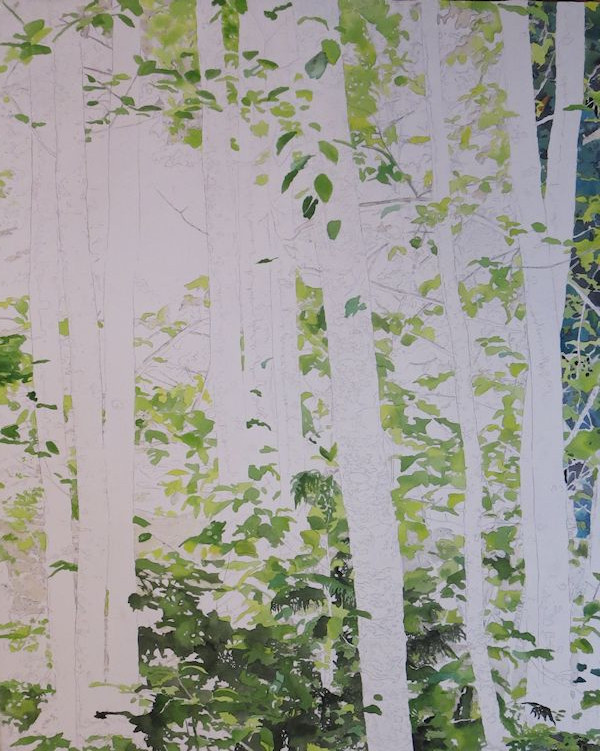
Start painting the leaves. They are thousands of shades of green in nature and finding the tight mixes for your greens can be tricky. An easy way, and this is what I am doing in most of my paintings is to start from a green basis and then modify it by adding yellow, blue, red, brown… I like sap green as a basis color as this is a natural looking green a bit on the warmer side.
Most greens in nature are warm green, if you paint your leaves with cold green only like Phtalo green, they are going to look unnatural.

Paint the leaves using a mix of wet in wet technique leaving soft edges and wet on dry techniques leaving hard edges. As a general rule you want a variety of edges in all of your paintings, so it is a good idea to mix some colors wet into wet and to leave a few hard edges as well.
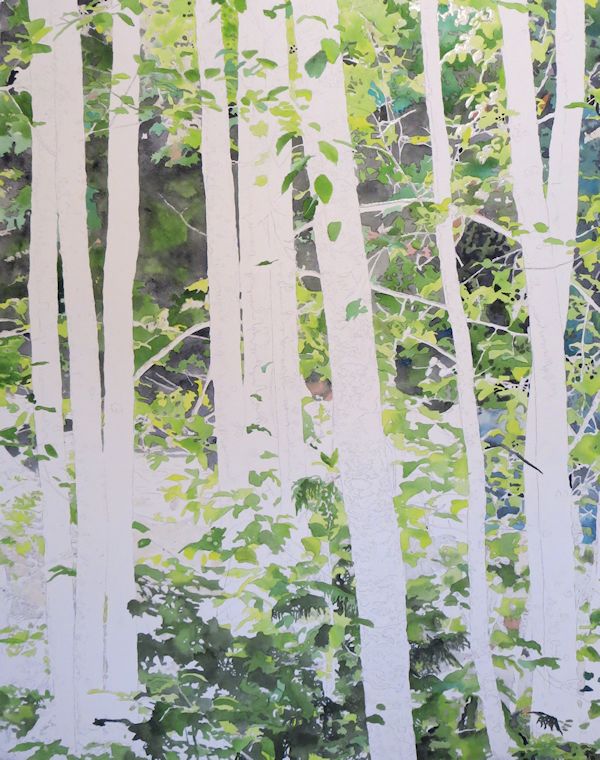
Then work on the background using your reference picture to decide what color to paint.

When you are done with most of the leaves and the background, mask the leaves that are situated on the trees trunks so you can focus on painting the trunks without having to paint around them.
I am a Blick Art Materials affiliate and I receive a small compensation for sales. That does not effect in any way the cost of the purchaser's order but it helps me keeping the content of this blog free.

 | Daler-Rowney Masking FluidThis fluid is used to create striking white highlights or to mask areas for overpainting at a later stage. It forms a fast-drying, water-resistant film on watercolor paper and board, and is easily removed when dry. |

Paint a first wash that correspond to the lighter tones you can see on the trees trunks.

Then start painting the trees bark texture using a scrumbling painting technique.

If you like to use a bit of splatter on top of your paintings, you can try using some watercolor pencils to draw on some parts of the painting so that when you will add water, their water soluble pigments will move and hopefully make interesting textures.
I am a Blick Art Materials affiliate and I receive a small compensation for sales. That does not effect in any way the cost of the purchaser's order but it helps me keeping the content of this blog free.

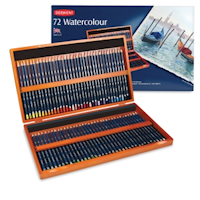 | Derwent Watercolor PencilsThese professional-quality, water-soluble pencils offer the freedom to switch from drawing to painting in an instant, with no change in tools. Use them to shade on dry paper, then quickly wash over with brush and water to get a blending effect. – Watercolor Pencil Sets |

You can also add lighter tones by drawing with white pencils.

Time to splash! I used a spray bottle to get the whole painting wet and then I also splattered some paint (blue and yellow) with a dropper.

I am also splattering with white china gouache diluted in water with a dropper.
I am a Blick Art Materials affiliate and I receive a small compensation for sales. That does not effect in any way the cost of the purchaser's order but it helps me keeping the content of this blog free.

 | Holbein Acryla Gouache, 152 Chinese White, 20 mlAcryla Designer Gouache is a fast-drying, opaque acrylic based watercolor paint. It's water soluble while wet, and water-resistant, matte and opaque, even over dark surfaces. Great for grounds and layering. |

After splashing, you can take a bit of time to assess your painting. At that stage my painting looks like that, I decide that I need more contrast and darker colors on the trees trunks as they became too light with the splashing.

Don't forget to remove the masking fluid, you can carefully pull on it with your fingers or use an eraser.

After the masking fluid has been removed, they are usually some hard edges that are very visible on the painting and could make it look almost like a collage. You can easily soften those edges with a stiff brush and some water. Here is a picture of a before/after softening edges of a leaf.

You can also scrub off a bit of paint with a stiff brush and some water where I want to lighten a bit the painting, mainly on the left side of the trunk as this is the direction the light is coming from.
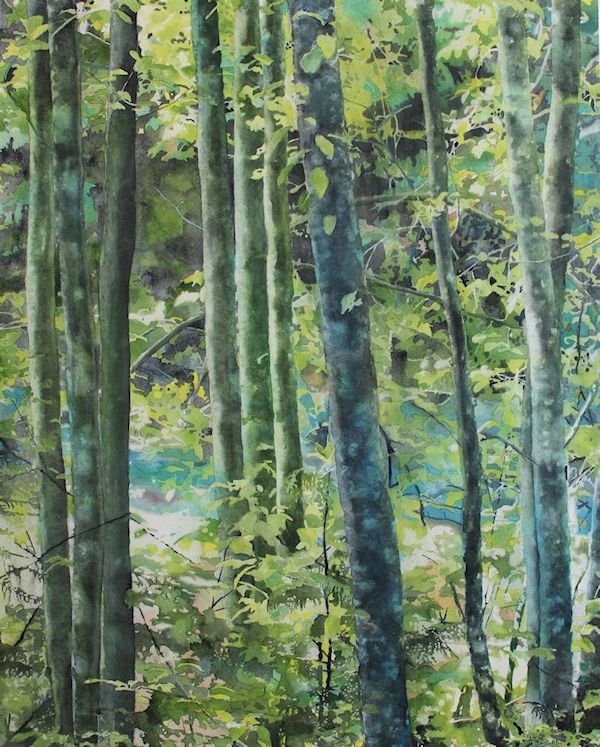
Trees of Riverbank
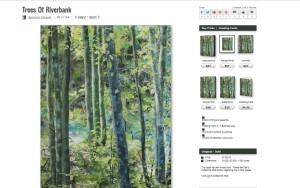
Original sold
Prints available on Fine Art America
Source: https://paintingdemos.com/riverbank-how-to-paint-trees-and-leaves-with-watercolor/
0 Response to "How to Draw Rivers and Trees"
Post a Comment